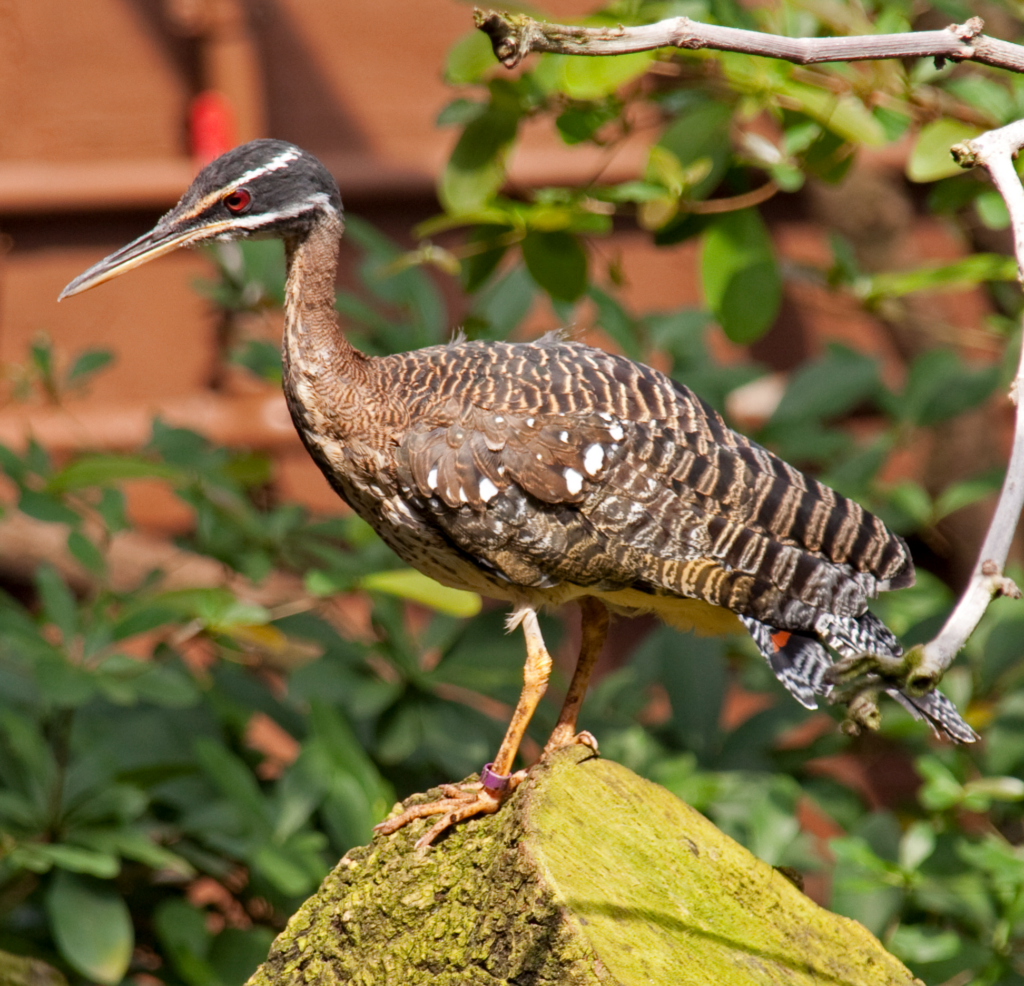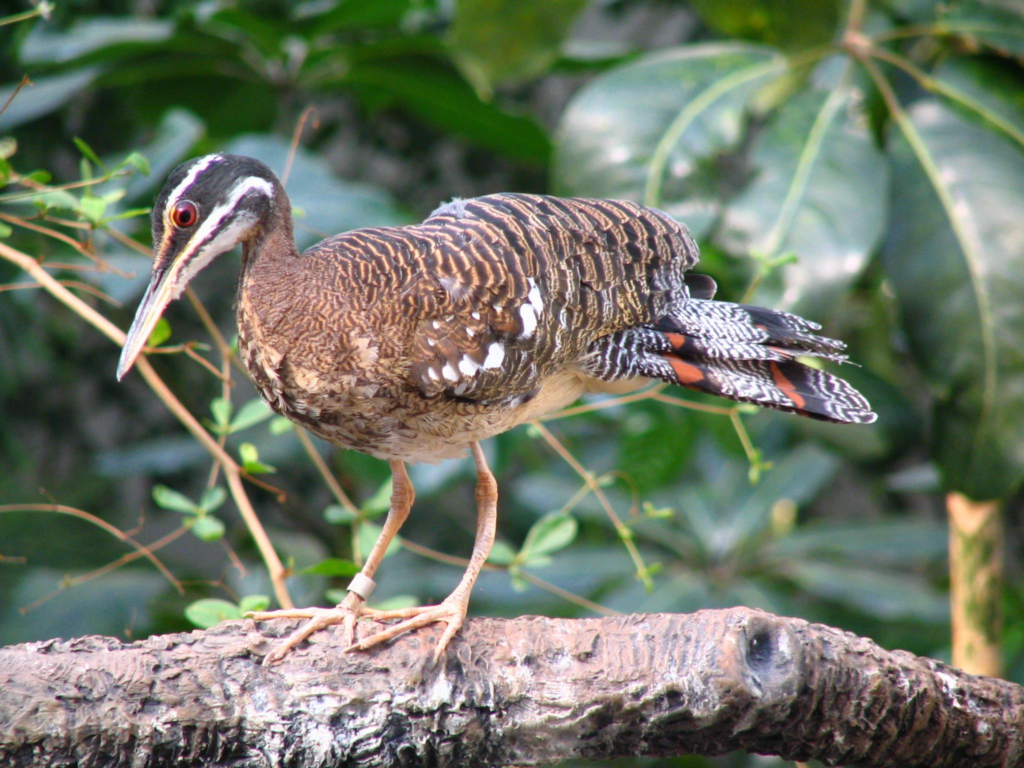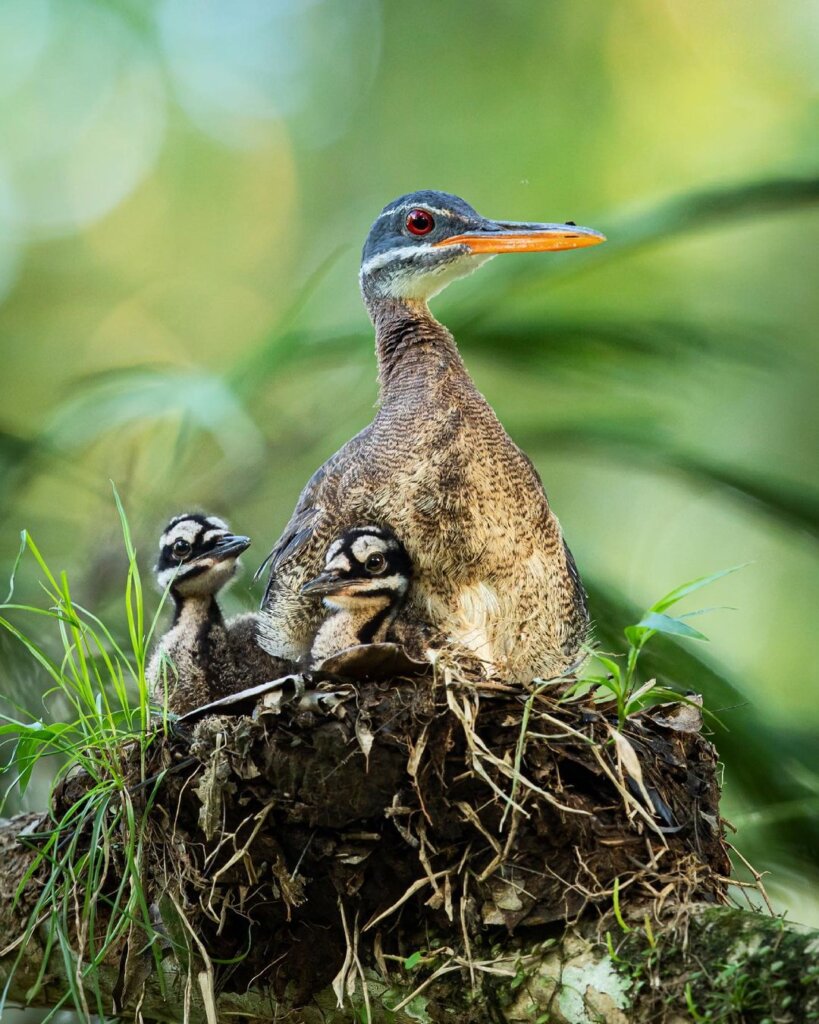A remarkably striking combination of highly varied plumage makes this bird one of the most popular sought-after avian species on the planet.
Meet the Sunbittern

“by Tony Hisgett from Birmingham, UK is licensed under CC BY 2.0.
The Sunbittern, Eurypyga helias, is a spectacularly colored bird solely found throughout tropical areas of Latin America.
Their boldly patterned plumage makes it one of the most sought-after bird species on the planet.

“File:Stavenn Eurypiga helias 00.jpg” by Stavenn is licensed under CC BY-SA 3.0.
Their distinctive appearance since them apart from many other bird species. They are 41 cm long with a wingspan of approximately 71 cm.
Most of their plumage is brown with black and white barring along with gold markings on the head and wings.

“File:Eurypyga helias -Smithsonian National Zoological Park, USA-8.jpg” by Brent Moore from Smyrna, TN, USA is licensed under CC BY 2.0.
Sunbitterns prefer to live in and around wetlands, rainforests, and many other vegetated areas throughout Central and South America.
These birds are well known for their rather unique dining habits of using their wings to create a shadow over the surface of the water. This activity attracts fish, which when they are closer to the surface, the Sunbittern will catch with their long beak.

“Sunbittern 2” by ahisgett is licensed under CC BY 2.0.
Unlike many species of bird which can often be seen together in groups known as flocks, Sunbitterns are more often than not solitary birds which can be seen walking along river banks and lake shores searching for food.
Known to be relatively shy they will either run or fly away if they feel threatened.

“File:Sunbittern London Zoo.jpg” by Spencer Wright is licensed under CC BY 2.0.
Sunbitterns are regarded as of “Least Concern” on the IUCN “Red List.” However, their population is in decline due to deforestation and hunting.
They are also a protected species in many countries.

With their striking appearance and highly unique dining habits, these birds are a true marvel of nature. So it’s up to each and every one of us to do our best to make sure these birds are protected for future generations.





